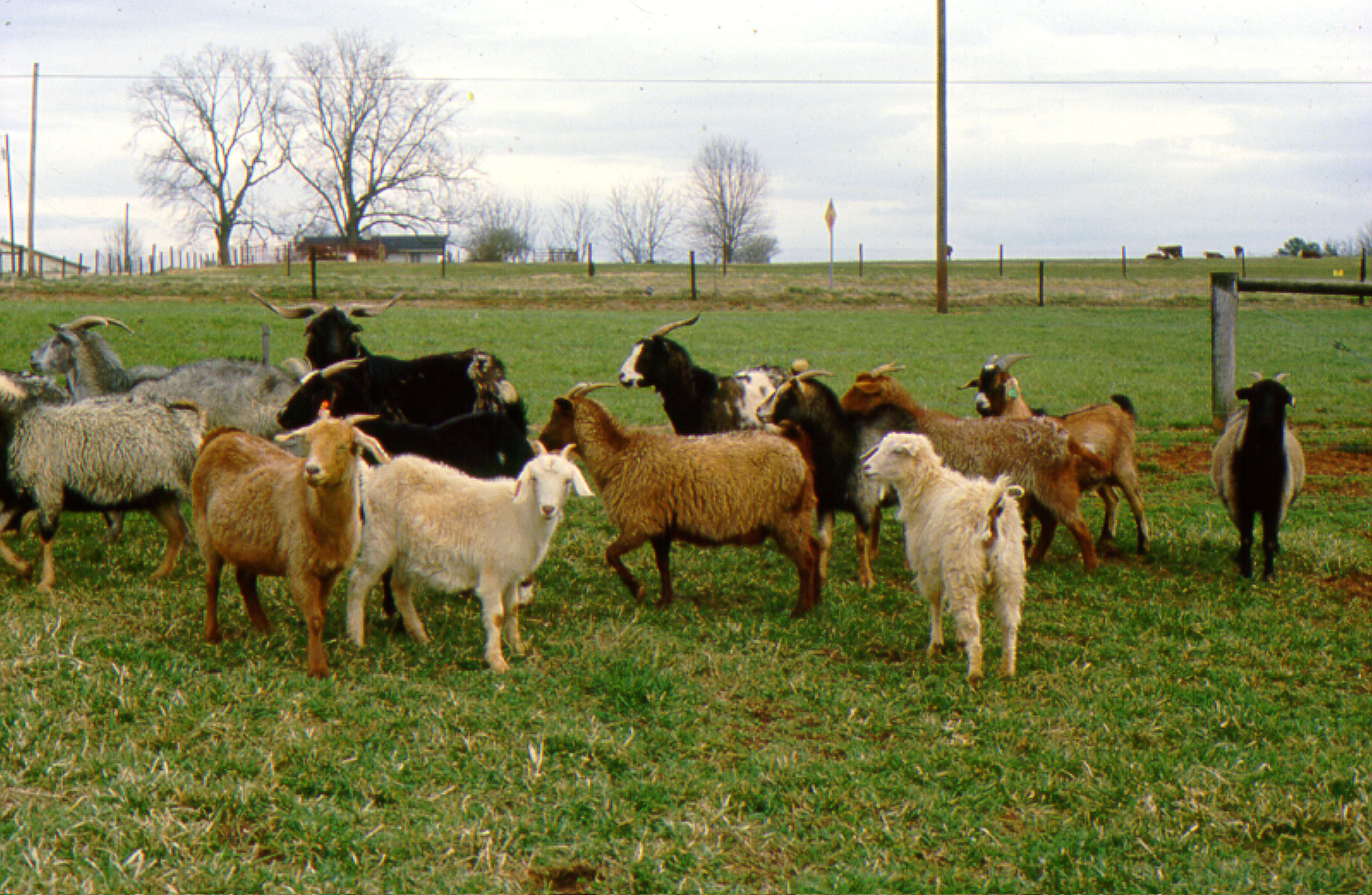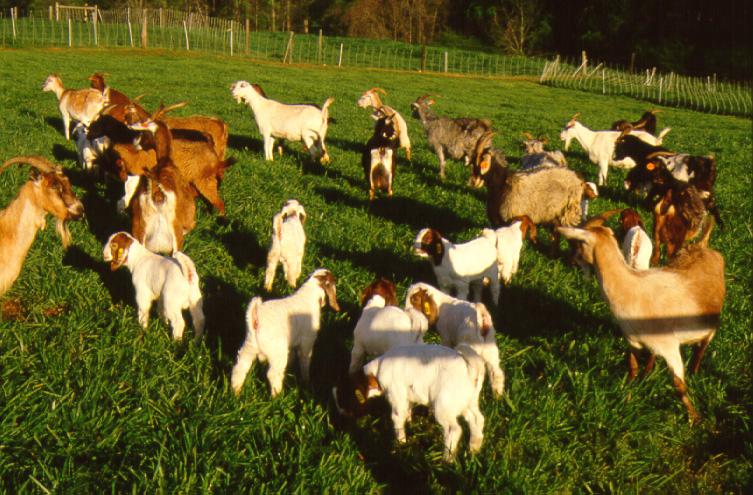History of the NCSU Meat Goat Program
go.ncsu.edu/readext?361405
en Español / em Português
El inglés es el idioma de control de esta página. En la medida en que haya algún conflicto entre la traducción al inglés y la traducción, el inglés prevalece.
Al hacer clic en el enlace de traducción se activa un servicio de traducción gratuito para convertir la página al español. Al igual que con cualquier traducción por Internet, la conversión no es sensible al contexto y puede que no traduzca el texto en su significado original. NC State Extension no garantiza la exactitud del texto traducido. Por favor, tenga en cuenta que algunas aplicaciones y/o servicios pueden no funcionar como se espera cuando se traducen.
Português
Inglês é o idioma de controle desta página. Na medida que haja algum conflito entre o texto original em Inglês e a tradução, o Inglês prevalece.
Ao clicar no link de tradução, um serviço gratuito de tradução será ativado para converter a página para o Português. Como em qualquer tradução pela internet, a conversão não é sensivel ao contexto e pode não ocorrer a tradução para o significado orginal. O serviço de Extensão da Carolina do Norte (NC State Extension) não garante a exatidão do texto traduzido. Por favor, observe que algumas funções ou serviços podem não funcionar como esperado após a tradução.
English
English is the controlling language of this page. To the extent there is any conflict between the English text and the translation, English controls.
Clicking on the translation link activates a free translation service to convert the page to Spanish. As with any Internet translation, the conversion is not context-sensitive and may not translate the text to its original meaning. NC State Extension does not guarantee the accuracy of the translated text. Please note that some applications and/or services may not function as expected when translated.
Collapse ▲1987-1989
- Drs. Jim Green and Paul Mueller from the Department of Crop Science acquired Brush goats (see picture below) primarily for the purpose of evaluating the potential for goats in brush control in cattle pastures, and for renovating overgrown land. Goats were housed at The Reedy Creek Road Field Laboratory (RCRFL) on the Forage/Grazing Ruminant Demonstration Unit and were from surplus animals owned by the University as well as donated from a local farmer. Funding ($1,000) was obtained from the North Carolina Forage and Grassland Council to obtain Angora goats from Texas to evaluate their potential for use in a meat/fiber/brush control program.

1990
- A trial was initiated at RCRFL to evaluate the best approach of using overgrown areas. The study evaluated imposing brush control vs. rotational browse production on a “waste” area of the Laboratory. This trial was to continue for 3 years. Three graduate students have been involved in this project, one of which received an MA for which this project was the focal point.
- Brush goats were acquired at the North Carolina Department of Agriculture & Consumer Services Mountain Research Station in Waynesville by Drs. Jim Green and Paul Mueller for the purpose of renovating overgrown land on the station. Initial renovation was initiated on several areas of the farm.
- An overgrown apple orchard at the Mountain Research Station was chosen as a site for a controlled study on the use of goats with or without cattle on the renovation of such sites. This site contained about 60 large multiflora rose plants, and the control of each individual plant was documented. The initial plan was developed by Drs. Jim Green, and Matt Poore and Kevin Pond from Animal Science. Subsequent animals of Spanish and native “brush” goats were obtained to provide the numbers necessary for this trial. The project (initiated in spring of 1991) was conducted by Dr. Jim Green and Matt Poore. An extension agent/graduate student summarized the results of this project. Two grants totaling $7,000 had been obtained for this specific trial (Small and Part-time Farmers Program IPM program).
- Initial discussions with the U.S. Forest Service led to a large project in which goats were being used to control unwanted brush on Roan Mountain, one of the natural mountain “balds” in North Western North Carolina.
1992
- On March 24, the North Carolina Meat Goat Conference was conducted in Greensboro at North Carolina A&T State University. This conference was planned and conducted by Drs. Jim Green, Paul Mueller, Matt Poore, Matt Claeys (Animal Science) and Ray McKinnie (NC A&T). The conference was attended by 100 producers and agriculture agents from North Carolina, South Carolina and Virginia. Drs. Green, Mueller and Poore were on the program, and the program also included goat specialists from Florida, Alabama, South Carolina and Virginia.
- After this conference, the planning committee was approached by Sharon Valentine, President of an agricultural venture capital group called AgriVentures, Inc. She said she had an interest in meat goats as an entrepreneur with rural economic development in mind. She indicated to us that she was putting together a grant proposal for studying the potential of a meat goat industry.
1993
- A grant funded for $50,000 by the Mid-Carolina Council of Governments, $5,000 of which went to Drs. Green, Mueller and Poore to support educational efforts in meat goats. The grant included a market development study, and called for the development of an association of meat goat producers and a series of educational events that would inform them about marketing and market development, selecting breeding stock, nutrition, forage production and animal health. Drs. Green, Mueller and Poore worked closely with the first co-executive officers of the association, Sharon Valentine and Albert Calloway, to help create the association by-laws and develop the educational events.
- In October of 1993, the South Eastern Regional Meat Goat Association (SERMGA) was formed at a meeting in Raleigh of 80 charter members and 30 others. Drs. Green, Mueller and Poore were appointed as ex-officio advisors to the board of directors. Due to the lack of a formal “Meat Goat Program”, the association initiated discussion on how to develop support in the legislature for a “Meat Goat Program” at NCSU. A strategy was developed and carried out by the board. A proposal for a program was developed by Drs. Green, Mueller and Poore and submitted to the NCSU administration for inclusion in a change budget request.
- In fall of 1993, The Boer goat breed was released from quarantine for export from New Zealand for importation to the U.S. This is the premier meat goat breed in the world. Funding was obtained from the North Carolina Agriculture Research Service and the North Carolina Cooperative Extension Service to purchase embryos and to have them implanted into “brush goats”.
1994
- In March, 28 Boer goat kids were born at RCRFL (see picture below). As a result, 10 Boer goats were obtained by NCSU. Dr. Bill Johnson requested colostrum samples from the recipients and also requested samples from recipients owned by Sharon Valentine at Fayetteville. Dr. Ben McDaniel became involved in the Boer Goat project in the role of providing advice concerning the breeding program for these animals.

- In July, the state legislature approved a budget that included $200,000/year in recurring funds for the development of a Meat Goat Program at NCSU.
- The North Carolina Meat Goat Handbook was developed and distributed to all counties. Eight grants totaling $26,000 were obtained to support these activities, although a substantial amount of funding had been diverted from other projects.
1995
- In late October, Dr. Jean-Marie Luginbuhl was hired as an Assistant professor in Crop Science and Animal Science (50:50) to lead the NCSU research and extension Meat Goat program. His office is located in Williams Hall and his laboratory in Polk Hall.


